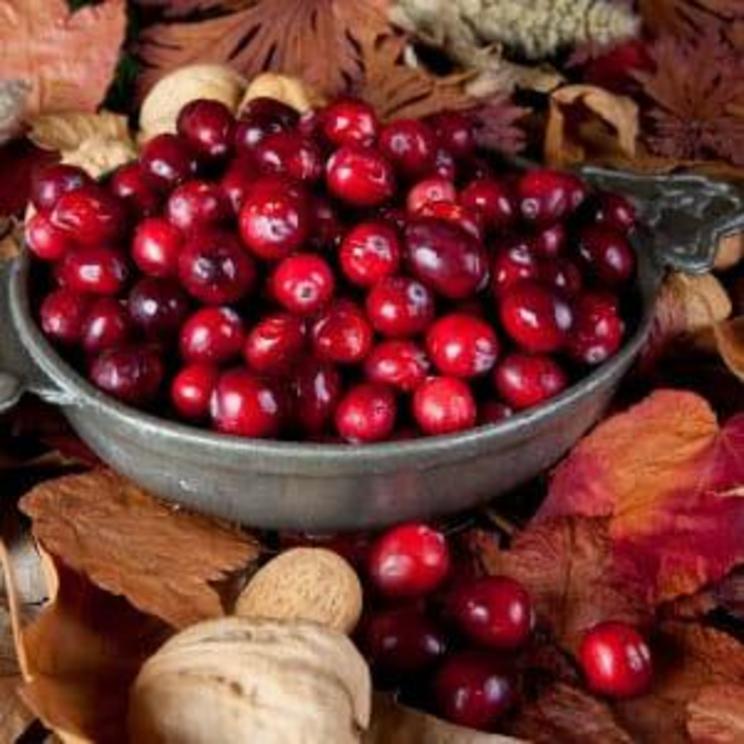
Cranberries help more than urinary tract infections!
Enjoy Cranberries All Year!
Many of us enjoy cranberries only during the Holiday Season, but why not enjoy the unique flavor and many health benefits of the plump ruby-red super fruit all year long?
We associate cranberries with the holidays because their peak harvest season is October through December. But even though there is only a small window of time that you can purchase the fresh berries in your local market, if frozen in airtight containers they can last up to a year! Did you know that in North America cranberries have historically been used as both a food and a natural medicine?
Cranberries are well known for their ability to treat and prevent urinary tract infections. They are loaded with phytonutrients, including proanthocyanidins, which have been shown to prevent certain bacteria from attaching to the lining of the bladder and urinary tract. It has been reported that the use of cranberries is most effective in treating women with recurrent urinary tract infections.
D-mannose, a naturally occurring sugar that is found in cranberries is extremely effective in the treatment and prevention of UTIs. So much so that it is becoming more widely used as a natural alternative to antibiotics which are typically prescribed for this condition. One study found that “D-mannose powder had significantly reduced the risk of recurrent UTI” in a group of women with a history of recurrent UTI. This is great news considering that the antibiotics most often prescribed for a UTI destroy the “good” bacteria that help to protect against infection caused by the “bad” (pathogenic) bacteria.
There are no known adverse side effects associated with D-mannose supplementation and because the body processes it differently than it does other sugars, it is safe for those avoiding sugar.
Research conducted at the University of Rochester Medical Center found that the proanthocyanidins that may prevent urinary tract infections might also be beneficial in treating gum disease by preventing bacteria from binding to teeth. The anti-inflammatory properties of cranberries can also reduce inflammation around the gums thus lowering the risk of periodontal disease.
A 2008 study concluded that “cranberry components, especially those with high molecular weight, could serve as bioactive molecules for the prevention and/or treatment of oral diseases.”
Cranberries also have a high concentration of anthocyanidins, antioxidants that have been shown to inhibit the development of atherosclerosis, cancer and other degenerative diseases. There are also studies that suggest “a potential role for cranberry as a dietary chemopreventative.”
In addition to anthocyanidins and proanthocyanidins, cranberries also contain the antioxidant quercetin. All three of these antioxidants, along with the fruit’s anti-inflammatory properties, add to the beneficial effect of cranberries on cardiovascular health.
Now that we are familiar with some of the many health benefits of cranberries, how about a few fun facts:
Cranberries are one of only three fruits native to North America, the other two being the blueberry and Concord grape. They are mainly grown in Wisconsin, Massachusetts, New Jersey, Oregon, and Washington State. Wisconsin produces at least 60% of the Nation’s crop.
Cranberries bounce! They have even been called “bounceberries.” One way to tell if a cranberry is ripe is to see if it bounces. Small pockets of air inside the cranberry account for its ability to bounce, so if the berry is not yet ripe or is damaged, it won’t bounce properly.
Cranberries contain almost 90% water.
THANKS TO: https://nexusnewsfeed.com/article/food-cooking/cranberries-help-more-than-urinary-tract-infections-1






 Sat Mar 23, 2024 11:33 pm by globalturbo
Sat Mar 23, 2024 11:33 pm by globalturbo

